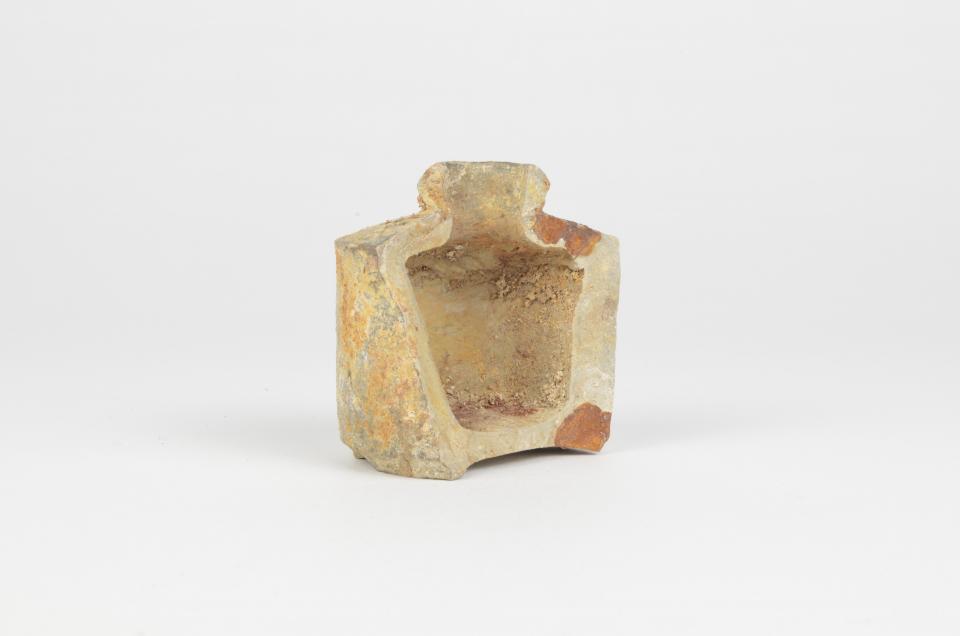
[H]5.0cm __[L]4.8cm __[W]3.1cm
A burnt portion of an ink bottle or well made from refined grey stoneware. The fragment appears to include approximately half of the original bottle broken vertically down the middle. The semi-circle shape of the ink well fragment suggests that the original bottle was a short, cylindrical shape with a raised, rounded lip. Beginning at the top of the rim, the lip appears to widen towards the shoulders before cutting inwards twice in consecutively smaller tiers. The inside walls of the lip appear to taper from the top of the rim inwards towards the middle of the bottle. Along the base of the ink well, the outer walls similarly cut inwards so that the inner circle of the base where it would rest on a surface has a smaller diameter than the body. The base is slightly concave. Its walls are thickest around the middle of its body and are thinner at the top and base. There is lots of white, brown, and grey discolouration and buildup of residues across the surface from fire damage.
There are several divisions used in organizing the archaeological material from Market Square. One frequent distinction that was used in this case was the idea of artifacts being above or below a "fire layer". The two major fires referenced in the records of these artifacts occurred in April 1840 and January 1865. The fire of 1840 essentially destroyed all of Market Square's buildings, including City Hall. Regulations following this event regarding wood construction are often credited in part to the timing of Kingston's shift to "the Limestone City". This burnt ink well fragment was found in a layer marked by the 1865 fire. This fire, started on January 10 in the King Street clock tower, destroyed City Hall's Market Wing, but left the main building mostly intact. While this ink bottle survived the fire in part, evidence of the event can be seen in the streaks of grey and white across its surface.
